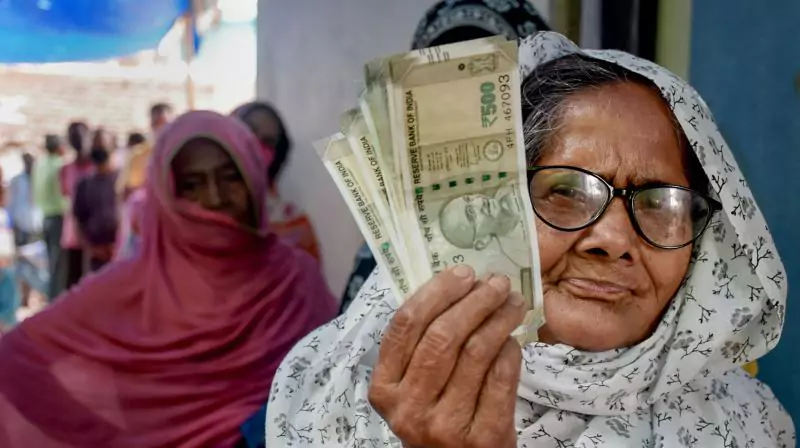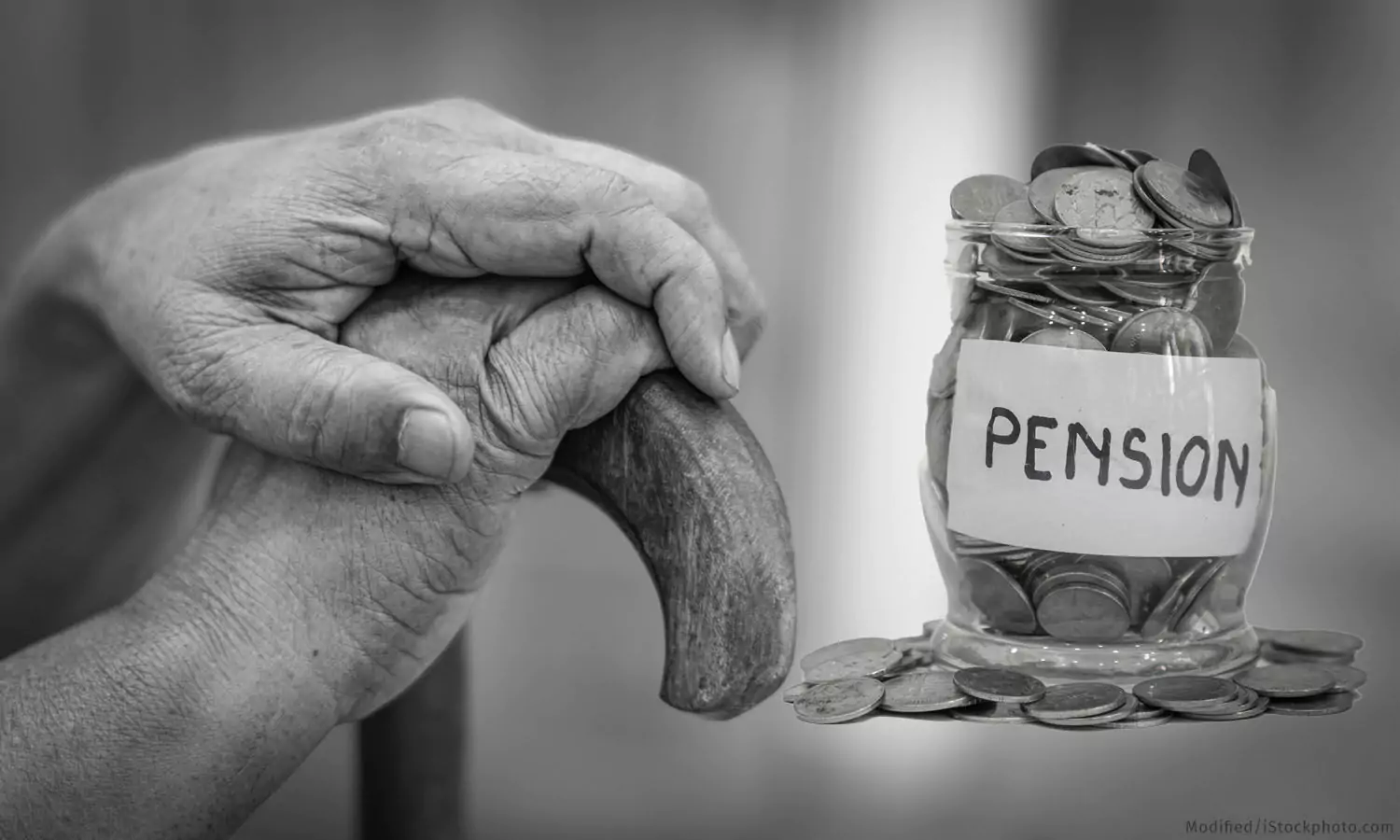India’s Aging Population & Pension Reform Needs
India is experiencing a rapid demographic transition with its aging population increasing at an unprecedented rate. By 2050, individuals aged 60 years and above will comprise 20% of the total population—approximately 319 million people. This demographic shift presents multifaceted challenges related to economic dependency, healthcare needs, gender disparities, social isolation, and digital exclusion. Addressing these challenges requires comprehensive reforms in pension systems, healthcare services, and social welfare policies.
Key Issues and Challenges
Demographic Transition and Aging Trends
Definition:
The process by which a society's population shifts
toward an increasing proportion of elderly individuals due to declining birth rates and
increased life expectancy.
Key Facts:
- Rapid Aging: India's elderly population doubled from 56 million (2010) to 110 million (2020)—a growth rate faster than other Asian countries like China and Japan.
- Projected Growth: By 2050, the number of individuals aged 60+ is expected to reach 319 million, constituting 20% of the total population.
- 75+ Age Group: The fastest-growing subgroup, placing greater pressure on healthcare services and long-term care systems.
- Dependency Ratio: The old-age dependency ratio (number of elderly individuals per 100 working-age individuals) is projected to increase from 92 in 2020 to 61.22 in 2050, indicating increased economic pressure on the working population.
Challenges:
- Increased demand for geriatric healthcare, pension support, and social care services.
- Higher prevalence of age-related diseases, requiring specialized medical care and long-term assistance.
- Rising need for caregivers, both within families and through institutional care.
Example:
- The rise in the 75+ age group is expected to double from 2021 to 2036, straining resources like hospital beds, care homes, and home healthcare services.
Economic Dependency and Pension Gaps
Definition:
Economic dependency refers to the reliance of elderly
individuals on their families, pensions, or social welfare programs for financial
support due to limited income sources.
Key Facts:
- 70% of elderly individuals are financially dependent on family members or social pensions.
- Only 22% receive any pension, with a stark gender gap: 4% of elderly women receive pensions compared to only 11% of men.
- Limited private pension coverage, with only 8% of seniors having private retirement savings.
- The National Social Assistance Programme (NSAP) provides a modest pension of ₹200–₹500 per month, which is insufficient to cover living expenses.
Challenges:
- Inadequate pension amounts force seniors to rely on family support, increasing intergenerational financial strain.
- Lack of financial literacy and access to private pension plans exacerbates poverty among the elderly.
- Limited coverage of the Atal Pension Yojana (APY) and National Pension System (NPS), especially among informal sector workers.
Example:
- Rural Elderly: Over 71% of seniors live in rural areas with limited access to financial services, making it difficult to receive pension payments.
- Widowed Women: Higher rates of widowhood and lack of inheritance rights increase financial vulnerability for elderly women.

Healthcare and Caregiving Burden
Definition:
The healthcare and caregiving burden refers to the
increased demand for medical care and personal
assistance due to age-related health issues, combined with limited
availability of specialized services and caregivers.
Key Facts:
- 75% of seniors suffer from chronic diseases such as diabetes, hypertension, arthritis, and cardiovascular ailments.
- Only 18% of the elderly population is covered by health insurance, leading to high out-of-pocket healthcare expenses.
- The cost of treating chronic illnesses consumes over 20% of elderly households' monthly income.
- Shortage of geriatric healthcare professionals and care facilities limits access to specialized care.
Challenges:
- Inadequate healthcare infrastructure, especially in rural areas, leads to delayed diagnosis and treatment.
- Rising healthcare costs create financial stress for families, increasing the risk of elder poverty.
- Lack of long-term care facilities forces families to provide care, affecting their economic productivity.
Example:
- Urban vs. Rural Divide: Seniors in rural areas face limited access to hospitals, specialists, and diagnostic services, resulting in poorer health outcomes.
- Family Caregivers: Over 60% of caregiving is provided by family members, often without financial support or formal training.
Feminization and Ruralization of Aging
Definition:
The feminization of aging refers to the increasing
proportion of elderly women due to their longer life expectancy compared to men. The
ruralization of aging refers to the concentration of the elderly population in
rural areas with limited access to healthcare,
financial services, and social support.
Key Facts:
- 58% of the elderly population are women, with higher rates of widowhood and social isolation.
- 71% of seniors live in rural areas, where healthcare and pension services are less accessible.
- Elderly women are more likely to experience poverty, illiteracy, and limited access to healthcare and pensions.
- Only 1.7% of elderly women receive occupational pensions compared to 3% of men.
Challenges:
- Limited financial independence, especially for women who spent their lives in unpaid caregiving roles.
- Higher rates of chronic illnesses among elderly women due to poor nutrition and limited healthcare access during their younger years.
- Social norms often restrict elderly women’s access to inheritance, land ownership, and financial resources.
Example:
- Rural Elderly Women: Limited access to healthcare, transportation, and legal services exacerbates their vulnerability, leading to lower life satisfaction.
Social Isolation and Elder Abuse
Definition:
Social isolation refers to the lack of social
interactions and emotional support, while elder abuse includes
physical, psychological, and financial
mistreatment of seniors.
Key Facts:
- 32% of seniors report low life satisfaction due to social isolation, loss of independence, and limited social interactions.
- 5% of elderly individuals experience physical, psychological, or financial abuse—often by family members.
- Fear of stigma and social exclusion prevents many seniors from reporting abuse.
Challenges:
- Urbanization and nuclear family structures reduce social support for elderly individuals.
- Limited access to community services and senior clubs increases feelings of loneliness.
- Lack of awareness and legal protection leaves many seniors vulnerable to abuse and exploitation.
Legal Framework:
- Maintenance and Welfare of Parents and Senior Citizens Act, 2007
(MWPSCA):
- Provides legal protection and maintenance rights for senior citizens.
- Mandates that children provide financial support to their elderly parents.
Example:
- Elder Abuse: Cases of financial exploitation include fraudulent property transfers and misuse of pensions by family members.
Digital Divide
Definition:
The digital divide refers to the gap between
individuals who have access to digital technologies and those who do
not, limiting seniors’ ability to use online services, access
financial tools, and stay socially connected.
Key Facts:
- Only 13% of seniors use the internet, compared to 50% of the younger population.
- Limited use of smartphones, computers, and digital platforms restricts access to government services, online banking, and telemedicine.
- Lack of digital literacy prevents seniors from using DigiLocker, UPI, and other e-governance platforms.
Challenges:
- Rural-Urban Divide: Internet penetration is lower in rural areas, limiting access to online healthcare, financial services, and social networks.
- Technology Barriers: Many elderly individuals struggle with complex user interfaces and security concerns related to online transactions.
- Digital Exclusion: Limited digital skills restrict seniors’ access to pension services, health insurance portals, and online communication tools.
Solutions:
- Digital Literacy Programs: Train seniors to use smartphones, online banking, and health apps.
- Simplified User Interfaces: Design digital platforms with larger fonts, voice commands, and intuitive navigation to cater to elderly users.
Example:
- UPI Adoption: Limited digital literacy prevents many seniors from using UPI for digital payments, forcing them to rely on cash transactions.













